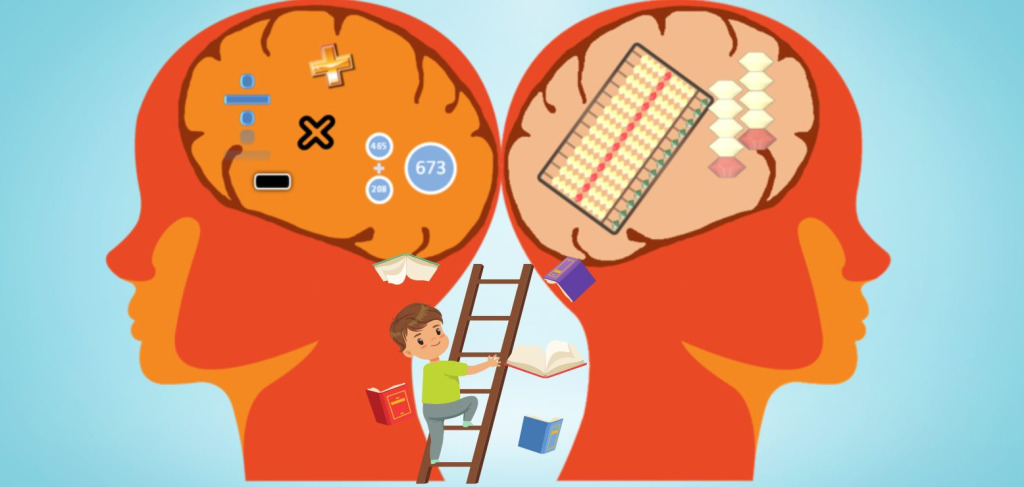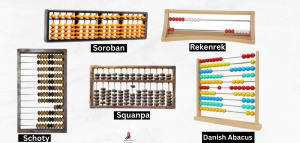The Growing Popularity of Abacus Learning & Its Benefits for Kids
Abacus learning has become increasingly popular among parents and educators in recent years. It is a great way to help children develop their brain power and math skills. Online abacus classes are also available, making it easier for kids to get the most out of their learning experience.
The benefits of online abacus learning are numerous. It helps kids develop problem-solving skills, encourages creativity, and boosts their confidence in math. It also helps them improve their mental calculation speed, which can benefit future academic success. Additionally, online abacus classes are convenient and cost-effective compared to traditional math teaching methods.
How Does Abacus Learning Help with Brain Development?

Abacus learning is a powerful tool for helping children develop mental math skills and stimulate their brains. It has been used for centuries as an effective way to teach children basic arithmetic and problem-solving skills while also encouraging them to think more critically and creatively.
Children can learn how to solve complex problems quickly and accurately using the Abacus, improving their ability to reason and calculate. Additionally, the Abacus can help children develop improved memory skills, better concentration, and increased problem-solving abilities – essential for success in school and life.
What Do Modern Parents Think About Abacus Learning for Their Kids?
With the rise of technology and its influence on our lives, modern parents are increasingly turning to Abacus learning for their kids. This ancient tool has been around for centuries and is still used today to teach children basic math skills. Modern parents are more aware of the benefits of abacus learning than ever before. They understand it can help their children develop problem-solving skills, improve concentration, and boost mental arithmetic capabilities. Therefore, many parents have started to incorporate this ancient tool into their children’s education to give them an edge in the future.Exploring Different Types of Abacus & How to Get Started with It
 The Abacus has been used for centuries for counting and calculations. It is an ancient device used in various cultures, such as the Chinese and Japanese. Different abacuses are available today, from the traditional Chinese Abacus to the modern Japanese Soroban.
Let’s take a look at the Abacus, which is an instrument used for quick calculations. It has been around for centuries and is still widely used today to perform math operations quickly and efficiently.
The Chinese Suanpan Abacus
SUANPAN, the traditional Chinese Abacus, was invented in the 12th century but only gained popularity in the 14th century.
Though complex, the invention was unsuccessful because of the two beads on the upper deck. This structural complexity ultimately led to its failure.
The Japanese Soroban Abacus
Abacus originated in China and came to Japan via Korea during the sixteenth century. The Japanese further refined the calculation methods of the Abacus compared to other cultures. In the 19th century, the Soroban was greatly simplified and reached its modern form around the 1920s. Its current appearance is aesthetically pleasing and far more visually attractive.
The Vietnamese Abacus
The Vietnamese Abacus is an innovative tool for arithmetic and calculation. This Abacus type has been used for over a thousand years and is still widely used today. Its design features two rows of beads arranged on a frame with seven columns, allowing users to quickly and accurately perform calculations in both decimal and binary formats. The Vietnamese Abacus provides an invaluable alternative to modern calculators or computers with its versatility, accuracy, and durability.
The East-Asian Schoty Abacus
The East-Asian Schoty Abacus is one of the most sophisticated abacuses available today. Mathematicians, merchants and even scholars have used it for centuries to solve complex problems quickly and accurately. This type of Abacus allows for more flexibility in calculations, allowing users to add, subtract, multiply and divide numbers easily. This form of Abacus is ideal for those looking to improve their accuracy in calculations and speed up their math skills.
The Roman Abacus
The Roman Abacus employed various mechanisms to streamline calculations, employing methods such as pebbles or human calculators. In the 11th century, Gerbert d’Aurillac, also known as Pope Sylvester I, introduced the Roman Abacus. Over time, this abacus underwent modifications, transforming into a portable device featuring eight long grooves composed of beads and tracks. This modified version is also referred to as the Wax Abacus.
The Sumerian Abacus
The Sumerian Abacus was developed during a period in history ranging from 2700 to 2300 B.C. It consisted of a single frame containing multiple columns and beads, which were arranged in a base-60 system.
The Cranmer Abacus
The Cranmer Abacus, invented by Terence V Cranmer in 1962, was specifically designed to assist visually impaired children and adults. This abacus drew inspiration from the soroban, a traditional Japanese abacus.
The Abacus has been used for centuries for counting and calculations. It is an ancient device used in various cultures, such as the Chinese and Japanese. Different abacuses are available today, from the traditional Chinese Abacus to the modern Japanese Soroban.
Let’s take a look at the Abacus, which is an instrument used for quick calculations. It has been around for centuries and is still widely used today to perform math operations quickly and efficiently.
The Chinese Suanpan Abacus
SUANPAN, the traditional Chinese Abacus, was invented in the 12th century but only gained popularity in the 14th century.
Though complex, the invention was unsuccessful because of the two beads on the upper deck. This structural complexity ultimately led to its failure.
The Japanese Soroban Abacus
Abacus originated in China and came to Japan via Korea during the sixteenth century. The Japanese further refined the calculation methods of the Abacus compared to other cultures. In the 19th century, the Soroban was greatly simplified and reached its modern form around the 1920s. Its current appearance is aesthetically pleasing and far more visually attractive.
The Vietnamese Abacus
The Vietnamese Abacus is an innovative tool for arithmetic and calculation. This Abacus type has been used for over a thousand years and is still widely used today. Its design features two rows of beads arranged on a frame with seven columns, allowing users to quickly and accurately perform calculations in both decimal and binary formats. The Vietnamese Abacus provides an invaluable alternative to modern calculators or computers with its versatility, accuracy, and durability.
The East-Asian Schoty Abacus
The East-Asian Schoty Abacus is one of the most sophisticated abacuses available today. Mathematicians, merchants and even scholars have used it for centuries to solve complex problems quickly and accurately. This type of Abacus allows for more flexibility in calculations, allowing users to add, subtract, multiply and divide numbers easily. This form of Abacus is ideal for those looking to improve their accuracy in calculations and speed up their math skills.
The Roman Abacus
The Roman Abacus employed various mechanisms to streamline calculations, employing methods such as pebbles or human calculators. In the 11th century, Gerbert d’Aurillac, also known as Pope Sylvester I, introduced the Roman Abacus. Over time, this abacus underwent modifications, transforming into a portable device featuring eight long grooves composed of beads and tracks. This modified version is also referred to as the Wax Abacus.
The Sumerian Abacus
The Sumerian Abacus was developed during a period in history ranging from 2700 to 2300 B.C. It consisted of a single frame containing multiple columns and beads, which were arranged in a base-60 system.
The Cranmer Abacus
The Cranmer Abacus, invented by Terence V Cranmer in 1962, was specifically designed to assist visually impaired children and adults. This abacus drew inspiration from the soroban, a traditional Japanese abacus.




